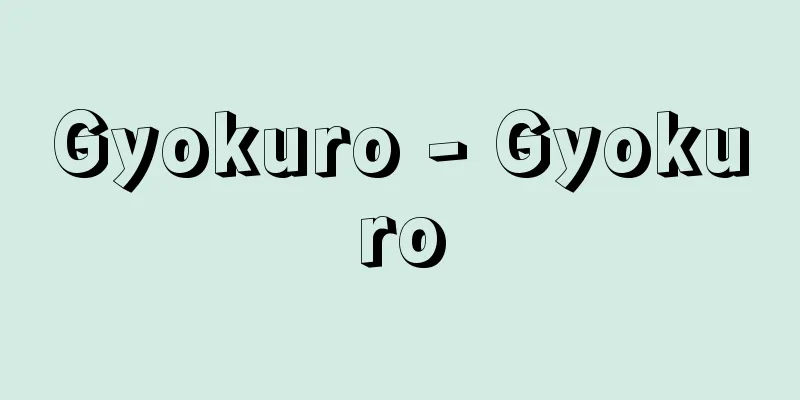Yama

|
The name of the god of death who rules over the underworld. It is a transliteration of the Sanskrit word yama, and is also called Yama-rāja. Other transliterations include yama, yama-rāja, yama, yamara, yamarasha, yamaraja, and yamara. Yama has the meanings of shibari (binding), meaning to bind sinners; twain (two worlds), meaning to always receive two punishments, one for pleasure and another for pain; twain (two kings), meaning that brother and sister (yami) are kings side by side; twain (equal kings), meaning to cure sins equally; sashi (stopping)), meaning to stop sin and evil; and sui (quarrel), meaning to stop quarrels and stifle evil. In other words, he is the chief priest of the underworld who watches over the sins of all living beings (all living beings) and judges the sins of the dead. In Indian mythology from the Vedic period, he was a twin god with his wife Yami, and was considered to be the god of righteousness and light, but because he was the first to die in the human world, he was also considered the ruler of the underworld. In Buddhism, he became the lord of the realm of hungry ghosts and hell, and came to be called the King of Magic as a judge who promotes good and punishes evil. He is also said to be a body that appeared as a punishment for the evil deeds of all living beings (a body of remorse for evil deeds), or an incarnation of Jizo Bodhisattva. In China, he was combined with Taoist thought and was counted as one of the Ten Kings who judge the sins of the dead in the underworld. In esoteric Buddhism, they are considered to be one of the heavenly beings and are depicted with a gentle appearance. [Zuiei Ito] [Reference] |Source: Shogakukan Encyclopedia Nipponica About Encyclopedia Nipponica Information | Legend |
|
冥界(めいかい)を支配する死の神の名称。サンスクリット語ヤマyamaの音写で、閻魔王(ヤマラージャyama-rāja)ともいう。ほかに炎摩、焔摩、琰魔、閻摩羅(えんまら)、閻摩羅社、琰摩羅闍(えんまらじゃ)、閻羅(えんら)と音訳。ヤマとは罪人を縛するという縛(しばり)の義、つねに苦楽の二つの報いを受けるという双世の義、兄と妹(ヤミーyamī)の2人が並んで王であるという双王の義、平等に罪を治するという平等王の義、罪悪を止めるという遮止(しゃし)の義、諍(いさか)いを止め悪を息(や)めるという諍息(そうそく)の義などがある。すなわち、生きとし生ける者(衆生(しゅじょう))の罪を監視し、死者の罪を判ずる冥界の総司である。ベーダ時代のインド神話では、妃(きさき)ヤミーと双生神で、正法(しょうぼう)の神、光明の神とされたが、人界最初の死者であったために冥界の支配者と考えられた。仏教においては、餓鬼界(がきかい)の主、地獄界の主となり、勧善懲悪の判官として琰魔法王(ほうおう)と称されるに至った。衆生の悪業(あくごう)によって報いとして現れた身(悪業所感(あくごうしょかん)の身)であるとも、地蔵菩薩(じぞうぼさつ)の化身(けしん)であるともいう。中国では道教の思想と結合して、冥府で死者の生前の罪業を裁くという十王の一に数えられた。密教では天部(てんぶ)の一衆とされ、温容な姿で示される。 [伊藤瑞叡] [参照項目] |出典 小学館 日本大百科全書(ニッポニカ)日本大百科全書(ニッポニカ)について 情報 | 凡例 |
Recommend
York Dynasty
A British dynasty (1461-85). They fought for the t...
Uchimaki [Hot Springs] - Uchimaki
…A hot spring in Aso Town, Aso District, northeas...
Lake Hachirogata
A lagoon at the base of the Oga Peninsula in weste...
Knowledge - Bunchi
In the Edo period, this meant the division and inh...
Sayasan
Leader of the peasant uprising in Myanmar. In 1928...
Desmarestia viridis (English spelling)
…[Mitsuo Chihara]. . . *Some of the terminology t...
Pass - Tsuzuru
[1] (convertible verb) tsuu, zu (convertible verb)...
Carbon paper
A thin copying paper made by mixing colored subst...
Attorney
…Higher-ranking lawyers (sergeants, later barrist...
Phalaenopsis
It is an epiphytic orchid native to the Himalayas,...
goliard
…They are also called wandering monks, but this t...
King Eimei
1625‐62 One of the surviving kings of the Southern...
Gefühl (English spelling)
...However, in contrast to the view that emotions...
parasitic volcano
...A small volcano that appears as if it were par...
Obi cedar - Obisugi
Imo Shochu from Miyazaki. The name of the sake com...






![Ibogawa [town] - Ibogawa](/upload/images/67caf1f9059a7.webp)


